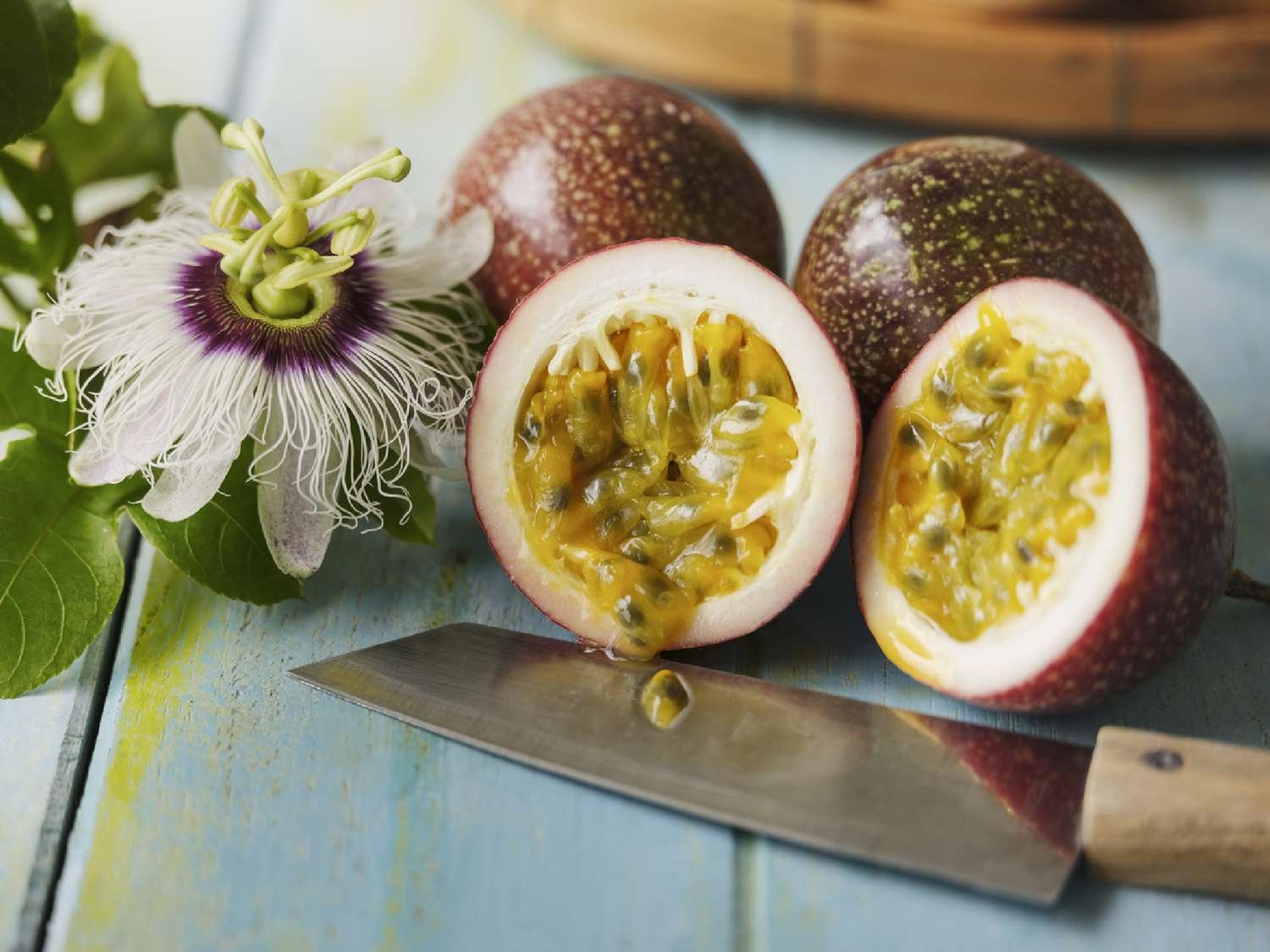PASSIONFRUIT
THE EXOTIC DELIGHT
The Allure of Passionfruit
Imagine slicing open a passionfruit and being greeted by its vibrant, aromatic pulp. Native to South America, this exotic fruit has won hearts around the world with its unique flavor and numerous health benefits.
Where Does Passionfruit Grow?
Passionfruit thrives in tropical and subtropical regions. Major producers include Brazil, Peru, Ecuador, Australia, New Zealand, South Africa, and parts of Southeast Asia. Whether you're exploring the markets of Rio de Janeiro or the orchards of Queensland, passionfruit is a cherished and common sight.
A World of Varieties
Passionfruit comes in several varieties, each with its own distinct characteristics:
Purple Passionfruit (Passiflora edulis): The most common variety, known for its sweet-tart flavor.
Yellow Passionfruit (Passiflora edulis f. flavicarpa): Larger and more acidic than the purple variety, often used in juices.
Giant Granadilla (Passiflora quadrangularis): Much larger, with a mildly sweet flavor.
Sweet Granadilla (Passiflora ligularis): Sweeter and less acidic, with a more delicate taste.
Identifying a Ripe Passionfruit
Selecting a ripe passionfruit involves a few simple checks:
Color: The skin should be deep purple or yellow, depending on the variety.
Texture: Ripe passionfruit will be slightly wrinkled and feel heavy for its size.
Aroma: A fragrant, sweet aroma indicates ripeness.
Harvesting and Enjoying Passionfruit
Passionfruit is usually harvested by hand when it falls to the ground naturally or when it reaches full color on the vine. Cutting open a passionfruit reveals its juicy, seed-filled pulp, which can be enjoyed fresh, added to desserts, or incorporated into beverages.
Sensory Experience
Tasting passionfruit is a treat for the senses. Its pulp is a delightful mix of sweet and tart flavors, with a texture that combines juicy flesh and crunchy seeds. The aroma is intoxicatingly tropical, making it a refreshing and exotic delight.
Growing Your Own Passionfruit Vine
Want to grow passionfruit at home? Here’s how to get started:
Climate: Passionfruit thrives in warm, frost-free climates.
Soil: Well-drained, sandy loam soil with plenty of organic matter.
Water: Requires regular watering, especially during dry periods.
Sunlight: Full sun for optimal growth.
Support: Vines need a sturdy trellis or fence for support.
Passionfruit in Spirituality
In some cultures, passionfruit and its vines hold spiritual significance. The intricate structure of the passionflower is often associated with themes of passion and devotion, and its unique beauty is celebrated in various rituals and traditions.
Nutritional Profile
Passionfruit is a nutritional powerhouse:
Vitamins: High in vitamins A and C.
Minerals: Rich in potassium, magnesium, and iron.
Fiber: Contains dietary fiber that aids in digestion.
Antioxidants: Packed with antioxidants that support overall health.
Culinary Uses
Passionfruit is incredibly versatile in the kitchen:
Fresh: Enjoyed as a snack or added to fruit salads.
Desserts: Used in cakes, tarts, and ice creams.
Beverages: Adds a tropical twist to juices, cocktails, and smoothies.
Sauces: Enhances savory dishes and desserts with its unique flavor.
Health Benefits
Passionfruit offers numerous health benefits:
Immune Support: High in vitamin C, boosting the immune system.
Digestive Health: Fiber content aids in digestion and promotes gut health.
Heart Health: Potassium helps regulate blood pressure and supports heart health.
Skin Health: Antioxidants and vitamins promote healthy, glowing skin.
Historical and Cultural Significance
Passionfruit has a rich history, particularly in South American cultures where it has been cultivated for centuries. Its name is derived from its association with the Passion of Christ, as Spanish missionaries saw religious symbolism in the complex structure of the passionflower.
Sustainability and Cultivation
Passionfruit can be grown sustainably with proper care. It requires moderate water and can thrive in a variety of soil types, making it a relatively low-impact crop. Organic farming practices enhance its sustainability and environmental benefits.
Patience Pays Off
Growing passionfruit requires some patience. Vines typically take 1-2 years to start bearing fruit, with peak production occurring after about 3-4 years. With proper care, a passionfruit vine can produce fruit for several years, offering a bountiful harvest season after season.





